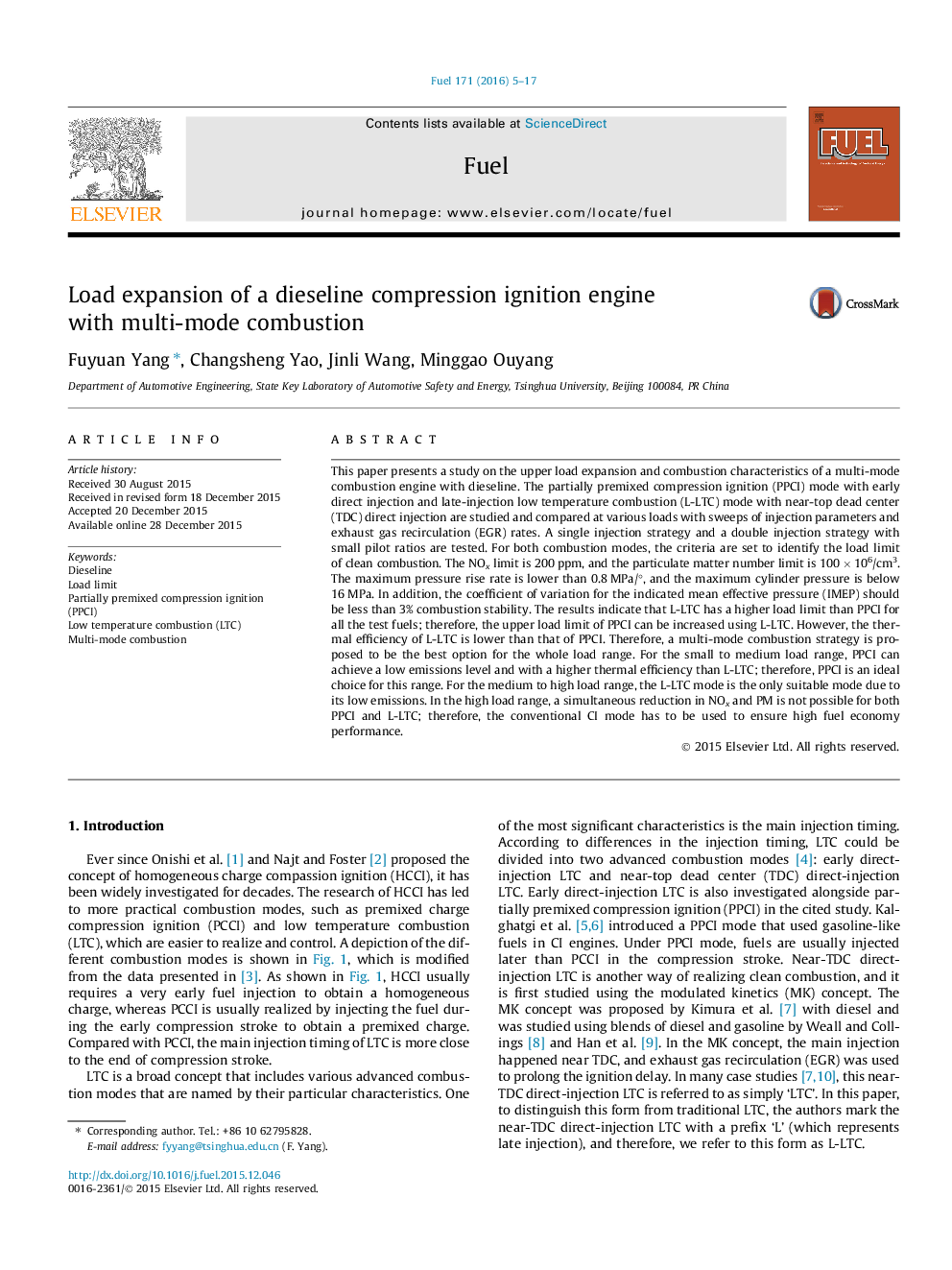| Article ID | Journal | Published Year | Pages | File Type |
|---|---|---|---|---|
| 205251 | Fuel | 2016 | 13 Pages |
This paper presents a study on the upper load expansion and combustion characteristics of a multi-mode combustion engine with dieseline. The partially premixed compression ignition (PPCI) mode with early direct injection and late-injection low temperature combustion (L-LTC) mode with near-top dead center (TDC) direct injection are studied and compared at various loads with sweeps of injection parameters and exhaust gas recirculation (EGR) rates. A single injection strategy and a double injection strategy with small pilot ratios are tested. For both combustion modes, the criteria are set to identify the load limit of clean combustion. The NOx limit is 200 ppm, and the particulate matter number limit is 100 × 106/cm3. The maximum pressure rise rate is lower than 0.8 MPa/°, and the maximum cylinder pressure is below 16 MPa. In addition, the coefficient of variation for the indicated mean effective pressure (IMEP) should be less than 3% combustion stability. The results indicate that L-LTC has a higher load limit than PPCI for all the test fuels; therefore, the upper load limit of PPCI can be increased using L-LTC. However, the thermal efficiency of L-LTC is lower than that of PPCI. Therefore, a multi-mode combustion strategy is proposed to be the best option for the whole load range. For the small to medium load range, PPCI can achieve a low emissions level and with a higher thermal efficiency than L-LTC; therefore, PPCI is an ideal choice for this range. For the medium to high load range, the L-LTC mode is the only suitable mode due to its low emissions. In the high load range, a simultaneous reduction in NOx and PM is not possible for both PPCI and L-LTC; therefore, the conventional CI mode has to be used to ensure high fuel economy performance.
